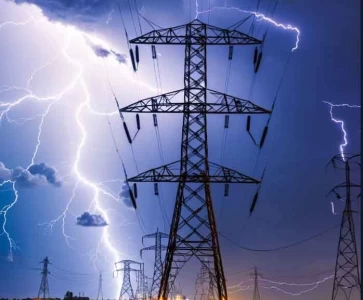Maintaining System Effectiveness: Inspection, Testing, and Upkeep
Lightning protection systems (LPS) play a critical role in safeguarding structures, equipment, and personnel from the damaging effects of lightning strikes. However, even the most well-designed LPS can lose its effectiveness if not properly maintained. Regular inspections, testing, and upkeep are essential to ensure the system's continued functionality and provide the intended level of protection. This article explores the importance of maintaining LPS effectiveness, discusses the consequences of neglecting maintenance, and outlines recommended inspection and testing intervals.
Visit Our Electrical Protection Study Course
Importance of Regular LPS Maintenance
The maintenance of LPS is essential for preserving their integrity and functionality over time. Environmental exposure, physical damage, and natural wear and tear can compromise the effectiveness of these systems.
Ensuring Operational Integrity
Regular maintenance checks help ensure that all components of the LPS are in good working condition and capable of performing their protective functions when needed.
Identifying and Addressing Wear and Damage
Exposure to harsh weather conditions, including high winds, rain, and temperature fluctuations, can lead to physical damage and corrosion of LPS components, affecting their performance.
Testing and Inspection Protocols
Adhering to standardized testing and inspection protocols is crucial for assessing the operational readiness of LPS.
Visual Inspections
Visual inspections are the first line of defense in identifying potential issues with LPS. These inspections can reveal visible signs of damage, wear, or tampering that may affect the system's performance.
Electrical Testing
Electrical testing of LPS components, such as grounding systems and surge protection devices, ensures their proper function and the system’s overall ability to safely conduct lightning currents to the ground.
Recommended Inspection Intervals
The frequency of inspections and testing for LPS can vary based on several factors, including the system’s age, the environment, and the history of lightning activity in the area.
Standard Maintenance Schedules
Industry standards typically recommend annual inspections for LPS, with more frequent checks advised for systems in high-risk areas or those exposed to severe environmental conditions.
Post-Storm Assessments
Following significant storm events, especially those involving lightning activity, a thorough inspection of the LPS should be conducted to assess any immediate impacts and to undertake necessary repairs.
Consequences of Neglecting LPS Maintenance
The neglect of regular maintenance for LPS can lead to severe consequences, compromising the safety of structures and individuals.
Reduced System Effectiveness
Without regular maintenance, the effectiveness of LPS can deteriorate over time, increasing the risk of lightning-related damage.
Potential for System Failure
The most severe consequence of neglected maintenance is the complete failure of the LPS during a lightning event, which can lead to property damage, injury, or even loss of life.
Best Practices for LPS Maintenance
To ensure the long-term effectiveness of LPS, adherence to best practices in inspection, testing, and maintenance is essential.
Professional Maintenance Services
Utilizing the services of professionals specialized in LPS maintenance can provide expertise and insights into the system’s condition and performance.
Keeping Maintenance Records
Detailed records of inspections, tests, and maintenance activities are crucial for tracking the health of the LPS and identifying trends or recurring issues.
Regular inspection, testing, and maintenance are essential to maintaining the effectiveness of lightning protection systems. By adhering to recommended practices and schedules, the risks associated with lightning strikes can be significantly mitigated, ensuring the continued safety and integrity of protected structures. Neglecting these critical maintenance activities can undermine the system's reliability, leading to potentially catastrophic consequences.

